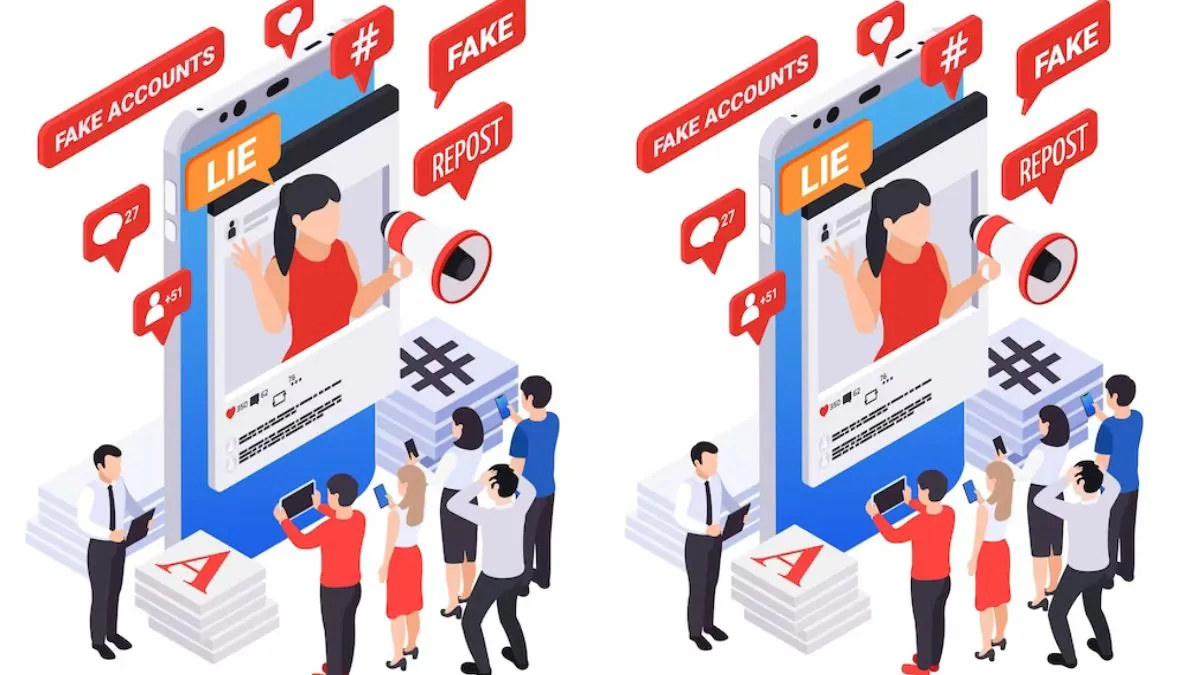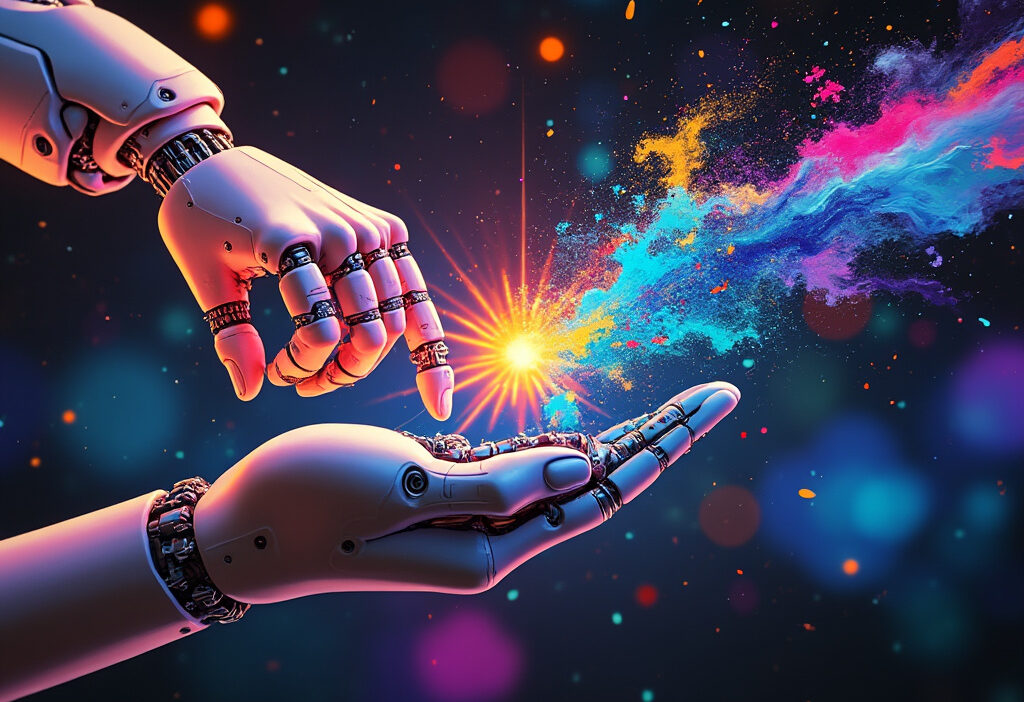Synthetic Media Redefining Creativity in the Age of AI-Generated Content
Synthetic media is transforming the landscape of creativity, offering unprecedented opportunities and challenges. From deepfakes to AI-generated music, this technology is redefining how content is produced and consumed. This article delves into the evolution, applications, and ethical considerations of synthetic media, providing a comprehensive overview of its role in modern digital culture.
The Origins of Synthetic Media
The concept of synthetic media is not a modern invention but rather an evolution of humanity’s long-standing fascination with artificial creation. Its roots trace back to ancient civilizations, where automata—mechanical devices designed to mimic life—captivated audiences. The Greeks built intricate hydraulic statues, while Renaissance engineers like Leonardo da Vinci sketched humanoid robots. These early attempts at synthetic motion laid the groundwork for the idea that machines could replicate aspects of human expression.
The 20th century marked a turning point with the advent of computing. In the 1950s, artists like Ben Laposky used oscilloscopes to generate electronic abstractions, pioneering computer-generated art. By the 1960s, researchers such as Ivan Sutherland developed Sketchpad, the first interactive graphical interface, demonstrating how machines could assist in creative processes. The 1980s saw the rise of CGI in films like Tron, proving that computers could craft immersive visual worlds.
A pivotal moment arrived in 1997 when Karl Sims evolved virtual creatures using genetic algorithms, showcasing AI’s potential in generative design. The early 2000s brought neural networks into the mix, enabling more sophisticated media synthesis. However, the true breakthrough came with deep learning in the 2010s, where models like DeepDream revealed AI’s ability to reinterpret visual data artistically.
These milestones set the stage for today’s AI-driven synthetic media, where tools like GANs produce hyper-realistic content. From ancient automata to algorithmic art, each leap in technology has expanded the boundaries of creativity, transforming synthetic media from a novelty into a cornerstone of modern digital expression.
Understanding Generative Adversarial Networks
Generative Adversarial Networks (GANs) represent a groundbreaking advancement in synthetic media, enabling the creation of highly realistic AI-generated content. Introduced by Ian Goodfellow in 2014, GANs operate on a unique adversarial framework where two neural networks—the generator and the discriminator—compete against each other. The generator creates synthetic data, while the discriminator evaluates its authenticity, pushing the generator to refine its output until it becomes indistinguishable from real data. This iterative process results in remarkably lifelike images, videos, and even audio.
The significance of GANs in synthetic media lies in their ability to produce content that was previously unimaginable. Unlike earlier methods that relied on rule-based algorithms, GANs learn patterns directly from data, allowing for unprecedented flexibility. For instance, they can generate hyper-realistic human faces, alter artistic styles, or even reconstruct missing parts of images with stunning accuracy. Their applications span industries, from entertainment and advertising to healthcare and fashion, where they enable rapid prototyping and personalized content creation.
However, GANs also introduce challenges. The same technology that powers creative innovation can be exploited for malicious purposes, such as deepfakes—a topic explored in the next chapter. Additionally, training GANs requires vast datasets and computational resources, and the models can sometimes produce artifacts or biased outputs if the training data is flawed. Despite these hurdles, GANs remain at the forefront of AI-driven creativity, redefining how media is produced and consumed. Their evolution continues to blur the line between human and machine-generated art, setting the stage for even more sophisticated synthetic media in the future.
The Rise of Deepfakes
The rise of deepfakes represents one of the most controversial yet fascinating applications of generative AI, building on the foundation of Generative Adversarial Networks (GANs) discussed earlier. These hyper-realistic, AI-generated videos and images manipulate facial expressions, voices, and even body movements to create convincing but entirely fabricated content. Initially emerging as a niche tool for digital art and satire, deepfakes have rapidly evolved into a powerful—and often problematic—force in media production.
Creative applications of deepfakes showcase their potential to redefine storytelling and entertainment. Filmmakers use them to de-age actors or resurrect historical figures, while advertisers leverage them for hyper-personalized campaigns. Voice synthesis, another facet of deepfake technology, allows for seamless dubbing in multiple languages, breaking down linguistic barriers in global media. These innovations hint at a future where synthetic media could democratize content creation, enabling smaller creators to achieve Hollywood-level effects.
However, the ethical and societal risks are profound. Deepfakes have been weaponized for misinformation, non-consensual pornography, and political manipulation, eroding trust in digital media. The line between reality and fabrication blurs, raising urgent questions about authenticity and consent. Regulatory frameworks struggle to keep pace, leaving platforms and lawmakers scrambling to mitigate harm without stifling innovation.
The dual nature of deepfakes—as both a creative breakthrough and a societal threat—highlights the broader tension in AI-generated content. As we transition to exploring AI in music and sound synthesis, it’s clear that synthetic media’s transformative power comes with responsibilities that demand careful navigation. The challenge lies in harnessing its potential while safeguarding against misuse.
AI in Music and Sound Synthesis
The integration of AI into music and sound synthesis has transformed the creative landscape, enabling unprecedented levels of innovation and efficiency. AI-powered tools are now capable of composing original melodies, generating lifelike instrumentals, and even mimicking the vocal styles of iconic artists. Platforms like OpenAI’s Jukebox and Google’s Magenta leverage deep learning to produce music that blurs the line between human and machine creativity. These systems analyze vast datasets of existing compositions to generate new pieces, often with surprising emotional depth and complexity.
One of the most groundbreaking applications is AI-assisted sound design, where algorithms can synthesize hyper-realistic audio effects or recreate vintage synthesizer tones with pinpoint accuracy. Tools like LANDR use AI to master tracks automatically, democratizing high-quality production for independent artists. Meanwhile, startups like Boomy allow users to generate entire songs in seconds, raising questions about authorship and the future of musical labor.
The impact on the industry is profound. AI is not just a tool for efficiency—it’s reshaping collaboration. Artists like Holly Herndon and Arca have embraced AI as a creative partner, using neural networks to craft avant-garde soundscapes. However, this shift also sparks debates over originality and intellectual property. As AI-generated music floods platforms, the distinction between human and machine artistry becomes increasingly ambiguous.
Yet, the technology’s potential is undeniable. From personalized soundtracks in gaming to adaptive music in film scoring, AI is unlocking new creative dimensions. As we transition to discussing AI-driven text generation, it’s clear that synthetic media—whether audio, visual, or textual—is redefining creativity itself, challenging us to reconsider the boundaries of human and machine collaboration.
Text Generation and Natural Language Processing
The rise of AI-driven text generation and natural language processing (NLP) has transformed how we create and consume written content. From automated journalism to AI-assisted storytelling, these technologies are reshaping industries that rely on language as their primary medium. Large language models (LLMs) like GPT-4 and Claude have demonstrated an uncanny ability to produce coherent, context-aware text, blurring the line between human and machine authorship.
In journalism, AI-powered tools such as Automated Insights and Narrativa generate data-driven reports in seconds, covering financial summaries, sports recaps, and even local news. These systems analyze structured data and convert it into readable narratives, freeing journalists to focus on investigative work. Meanwhile, creative writing has embraced AI as a collaborative partner—tools like Sudowrite and InferKit assist authors with brainstorming, drafting, and refining prose, offering suggestions that enhance creativity rather than replace it.
Beyond traditional writing, NLP is revolutionizing customer service with chatbots, enabling dynamic interactions that mimic human conversation. Educational platforms leverage AI to generate personalized learning materials, while legal and medical fields use it to draft documents and summarize complex research. However, challenges persist, including ethical concerns around misinformation, bias in training data, and the potential devaluation of human creativity.
As AI-generated text becomes indistinguishable from human writing, questions arise about authorship and intellectual property. Yet, rather than rendering human writers obsolete, these tools are expanding the boundaries of what’s possible, much like AI’s impact on music and sound synthesis. The next frontier—AI in visual arts—promises a similar evolution, where machine and human creativity intersect in unprecedented ways.
Visual Arts and AI-Generated Imagery
The intersection of AI and visual arts has revolutionized how creativity is expressed, blurring the lines between human and machine-generated artistry. From digital paintings to photorealistic images, AI tools like DALL·E, MidJourney, and Stable Diffusion empower artists to explore uncharted aesthetic territories. These models leverage generative adversarial networks (GANs) and diffusion models to produce visuals that range from abstract compositions to hyper-realistic portraits, often indistinguishable from human-made works.
Key innovators in this space include artists like Refik Anadol, who uses AI to create immersive data-driven installations, and Mario Klingemann, a pioneer in neural network art. Their work challenges traditional notions of authorship, as AI becomes both a collaborator and a medium. Tools like Runway ML and Adobe Firefly further democratize access, enabling creators with minimal technical expertise to experiment with AI-generated imagery.
The impact extends beyond individual artistry—AI is reshaping industries like advertising, gaming, and film. Studios now use AI for concept art, reducing production timelines while expanding creative possibilities. However, this rapid evolution raises questions about originality and intellectual property, themes that will be explored in the next chapter on ethical implications. Unlike text generation, where NLP models refine language, AI in visual arts redefines perception itself, offering new ways to interpret and manipulate reality.
As AI-generated visuals become mainstream, the debate intensifies: Is this the next Renaissance or a threat to human creativity? The answer lies in how artists and technologists navigate this symbiotic relationship, pushing boundaries while addressing the ethical challenges ahead.
Ethical Implications of Synthetic Media
The rise of synthetic media, powered by AI, has unlocked unprecedented creative possibilities, but it also raises profound ethical questions. As AI-generated content blurs the line between reality and fabrication, concerns about misinformation, privacy violations, and malicious misuse have taken center stage. Deepfakes, for instance, can manipulate voices and faces with alarming accuracy, enabling everything from political disinformation to non-consensual imagery. The democratization of these tools means bad actors can exploit them at scale, challenging trust in digital media.
Privacy is another critical issue. AI models often train on vast datasets scraped from the internet, sometimes without consent. Artists and individuals may find their likenesses or works repurposed in ways they never authorized. This raises questions about intellectual property and personal rights in an era where data is easily harvested and repackaged. Regulatory frameworks struggle to keep pace, leaving gaps that could enable exploitation.
Debates around synthetic media regulation are intensifying. Some advocate for strict controls, such as watermarking AI-generated content or requiring disclosure labels. Others warn that overregulation could stifle innovation, arguing for industry-led solutions instead. Meanwhile, tech companies and policymakers grapple with balancing creative freedom against societal harm.
The ethical implications of synthetic media extend beyond technology—they reflect broader tensions between progress and responsibility. As the next chapter explores, these dilemmas will shape the future of creative professions, forcing industries to redefine collaboration between human ingenuity and AI automation. The challenge lies in fostering innovation while safeguarding trust and authenticity in media.
The Future of Creative Professions
The rise of synthetic media is fundamentally altering the landscape of creative professions, challenging traditional workflows while opening new avenues for innovation. In fields like filmmaking, journalism, and design, AI-generated content is no longer a futuristic concept—it’s a present-day tool reshaping how professionals approach their craft.
In filmmaking, AI-driven tools are automating tasks like scene generation, voice synthesis, and even scriptwriting. While some fear this could diminish the role of human directors and writers, others argue it enhances creativity by handling repetitive tasks, allowing artists to focus on storytelling and vision. Deepfake technology, for instance, enables historical figures to be resurrected on screen, but it also raises questions about authorship and artistic integrity.
Journalism faces a similar duality. AI can draft news reports in seconds, freeing journalists to investigate deeper stories. However, the risk of AI-generated misinformation—as discussed in the previous chapter—demands careful oversight. Newsrooms must balance efficiency with ethical responsibility, ensuring AI aids rather than replaces human judgment.
For designers, generative AI tools like DALL·E and MidJourney are revolutionizing visual creation. These tools can produce stunning artwork in moments, but they also challenge the uniqueness of human creativity. The key lies in collaboration—using AI as a co-creator rather than a replacement, blending algorithmic precision with human intuition.
The future of creative professions hinges on finding equilibrium. As synthetic media evolves, industries must redefine roles, emphasizing human oversight, ethical frameworks, and hybrid creativity. The next chapter will explore how public trust in media is tested by these advancements, underscoring the need for transparency and education in an AI-augmented world.
Public Perception and Trust in Media
The rise of synthetic media has introduced a paradox in public perception: while AI-generated content unlocks unprecedented creative possibilities, it also erodes trust in digital media. Deepfakes, AI-written articles, and hyper-realistic synthetic imagery blur the line between reality and fabrication, leaving audiences questioning the authenticity of what they consume. A Pew Research study found that over 60% of adults struggle to distinguish between AI-generated and human-created content, fueling skepticism and misinformation.
Trust in media hinges on transparency, yet synthetic tools often operate as black boxes, making it difficult for users to discern origins. The spread of AI-manipulated political speeches or fabricated celebrity endorsements demonstrates how quickly synthetic media can weaponize misinformation. Platforms like Meta and YouTube now enforce labeling for AI-generated content, but inconsistent standards and easy circumvention undermine these efforts.
To combat distrust, media literacy must evolve alongside synthetic technologies. Educational initiatives should teach critical evaluation skills—such as spotting inconsistencies in AI-generated videos or verifying sources—while emphasizing the ethical use of synthetic tools. Organizations like the Partnership on AI advocate for watermarking and metadata standards to trace AI involvement, but widespread adoption remains slow.
The challenge extends beyond detection; it demands a cultural shift toward responsible creation. Creators using synthetic media must prioritize disclosure, ensuring audiences understand when and how AI contributes to content. As synthetic media becomes ubiquitous, rebuilding trust will require collaboration between technologists, policymakers, and educators—balancing innovation with accountability to preserve the integrity of digital discourse.
Innovations and Future Trends
The rapid evolution of synthetic media is reshaping the creative landscape, pushing the boundaries of what AI can achieve in content production. Emerging technologies like diffusion models and neural radiance fields (NeRF) are enabling hyper-realistic image, video, and 3D environment generation with unprecedented precision. These advancements are not just refining existing workflows but unlocking entirely new forms of expression—such as interactive storytelling, where narratives adapt dynamically to user input, or AI-augmented design tools that collaborate with creators in real time.
One of the most transformative trends is the rise of multimodal AI systems, which seamlessly integrate text, audio, and visual generation. Imagine an AI that can draft a script, generate lifelike voiceovers, and produce corresponding video scenes—all while maintaining stylistic consistency. Such systems could democratize high-quality media production, empowering independent creators while challenging traditional studios to innovate.
The relationship between humans and AI is also evolving from a tool-based dynamic to a co-creative partnership. Artists are increasingly using AI as a brainstorming ally, leveraging its ability to rapidly prototype ideas or suggest unconventional directions. However, this shift raises questions about authorship and originality, as the line between human and machine contribution blurs.
Looking ahead, synthetic media could revolutionize industries beyond entertainment. In education, AI-generated simulations might offer immersive historical reenactments or personalized tutoring. In marketing, brands could deploy dynamic, audience-tailored content at scale. Yet, as these possibilities unfold, ethical considerations—such as deepfake misuse and algorithmic bias—must remain central to development. The future of synthetic media isn’t just about technological prowess but about fostering a symbiotic ecosystem where AI amplifies human creativity without eclipsing it.

Conclusions
Synthetic media is a double-edged sword, offering both incredible creative possibilities and significant ethical challenges. As AI continues to evolve, it is crucial to navigate these advancements responsibly. By fostering innovation while addressing potential risks, we can harness the power of synthetic media to enrich digital culture and redefine creativity in the age of AI.



